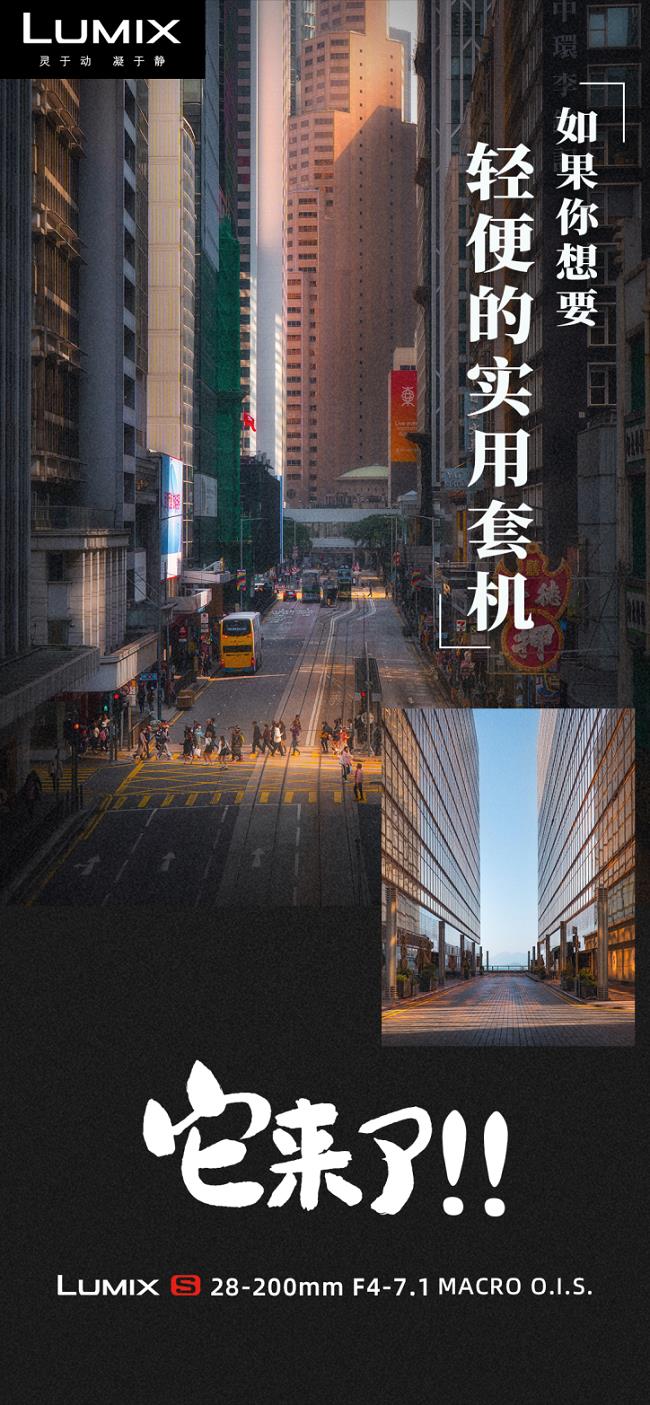
A year ago, Panasonic S5M2 fuselage was released. During this year, I used this machine to shoot many works, such as cities, portraits, nature and starry sky.
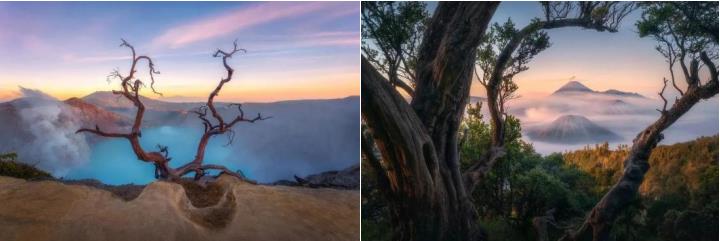


When shooting these works, I used 14-28, 20-60 and 70-200 lenses, but some photographers think it is too heavy to carry multiple lenses, so many people expect a wide-range zoom lens, and today this 28-200mm lens is coming.
This lens weighs 413 grams, and the total weight with S5M2 is only 1070 grams, and it is very short. The zoom is completely out of the lens, which is only the length of a 6.1-inch mobile phone.
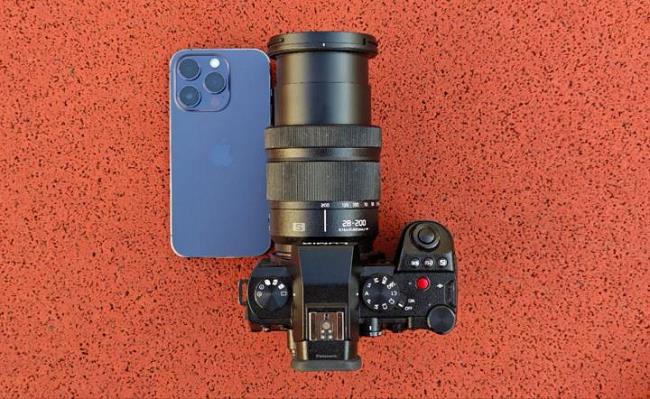
What is the picture quality of this lightweight combination? What are the shooting techniques? That’s what I want to talk to you about next, and I will share all the specific seats.
The advantage of large zoom lens is its high flexibility, and it can cope with scenes from wide angle to telephoto. Therefore, I came to Hong Kong to photograph the culture, scenery and architecture during the Spring Festival, which can very well reflect the actual performance of this lens in all aspects of travel.
First, shoot a big scene at the wide-angle end
In landscape photography, wide-angle is still the focal range that is widely used. It can accommodate richer scene content and show stronger picture tension. There are two wide-angle seats in Hong Kong that I particularly like.
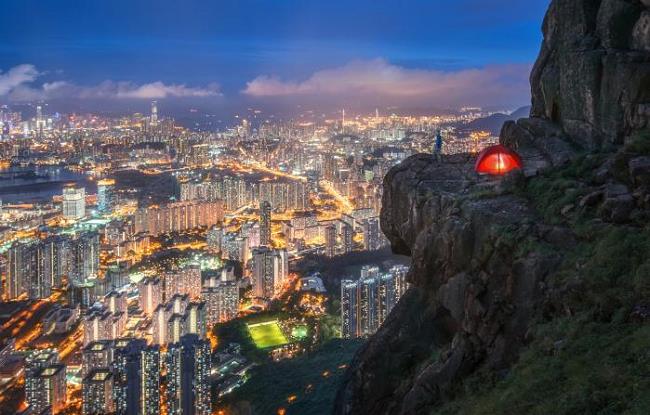
The Flying Goose Peak in Hong Kong is a classic seat overlooking the city from the top of the mountain. Compared with Taiping Peak, it is more wild here. I named this work "Top of the Harbour City". Overlooking the Victoria Harbour with the top of the mountain as the foreground, it needs a wide-angle focal section to highlight the vastness of the city. There are thousands of lights at the foot of the mountain and I am alone on the mountain. This contrast of artistic conception is particularly story-telling. Take the tent as the interest point, guide the vision, and let everyone notice the people on the top of the mountain. The top of the mountain is completely dull, and it can be brightened by the powerful tolerance of S5M2 in the later stage.
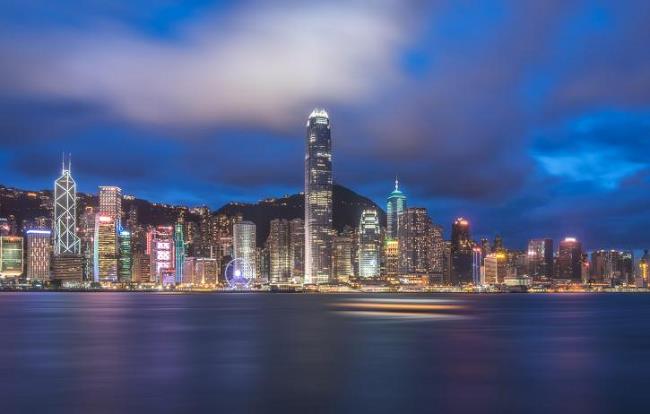
Victoria Harbour Observation Deck, this position pays attention to the combination of static and dynamic, and draws the water surface and clouds with a slow shutter to make the flowing state contrast with the building. In order to make the water surface not too monotonous, I specially photographed a traveling cruise ship, which can make the foreground more vivid. A 67mm filter is used for the 28-200 lens, and in the evening, I use a 6-speed reducer to make the shutter speed reach about 40 seconds.
Second, express the perspective of architecture
In the theme of cities and buildings, focus perspective is a particularly commonly used expression technique. Its definition is based on a foothold, which conforms to the characteristics of being near and far away, and helps to express the sense of space.
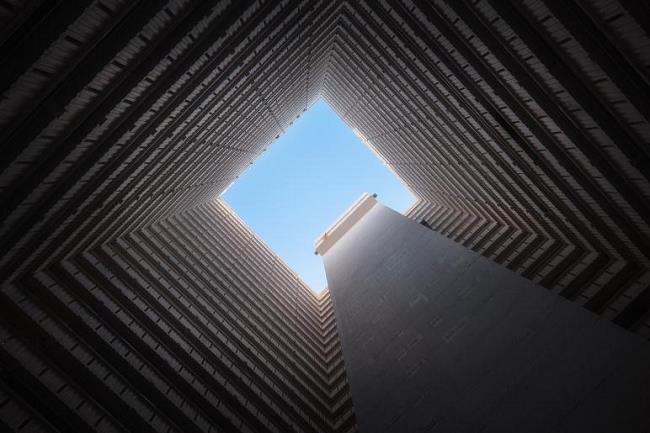
Ping Shi Cun, one of the representatives of tube-shaped buildings, is surrounded by rooms and hollowed out in the middle. Standing in the middle, you can get a typical focus perspective effect, with a strong sense of extension layer by layer, which can highlight the characteristics of dense residential areas. The small and lightweight 28-200 sets of machines are convenient to store and will not become a burden when traveling or walking in the city.
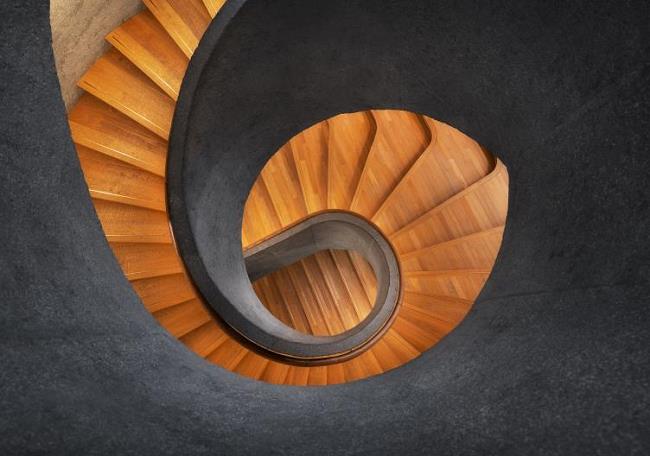
Hong Kong Museum of Art, spiral stairs are common in many cities, and the feeling of winding curves is very tense. Shooting with a 28mm wide-angle end gives a stronger perspective. When shooting, you should choose the direction where the light shines on the stairs, so that the stairs and the handrail exterior wall can form a bright and dark contrast and be divided into levels.
Third, the sense of compression of telephoto
We often mention the sense of telephoto compression, which refers to compressing itself into a level of up, down, left and right in a plane. This effect can also be reflected in this lens of 28-200 mm.
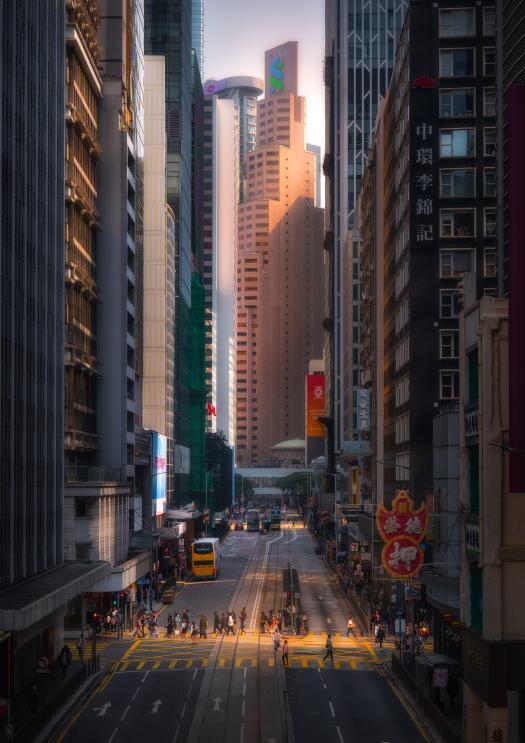
On the overpass in Central Hong Kong, when the sun sets, a beam of light just illuminates the intersection in the distance. The rushing crowds and double-decker buses can express the characteristics of Hong Kong very well. With the naked eye, this scene is from near to far, but it is more prominent from top to bottom when photographed with telephoto. In contrast with high-rise buildings, people and vehicles are very small.
Fourth, telephoto captures small scenes
The flexibility of large zoom allows us to compose freely and shoot more angles and details.
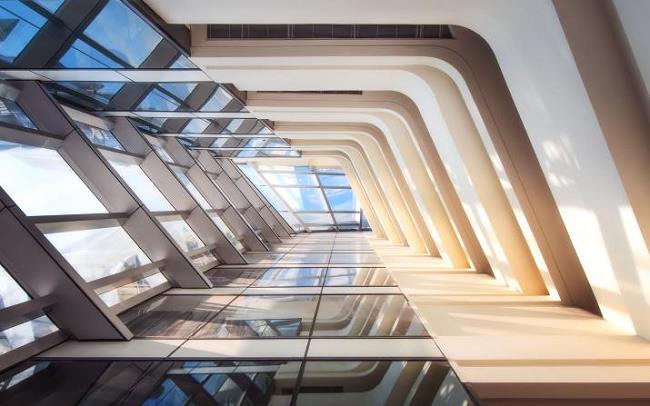
The Innovation Building of Hong Kong Polytechnic University is a school of environmental design, so its architectural style is also very distinctive, and the semi-hollow effect presented by white walls and glass is very futuristic. The color and light of the whole picture are very transparent and harmonious when the light shines into the patio with a 70mm focal length.
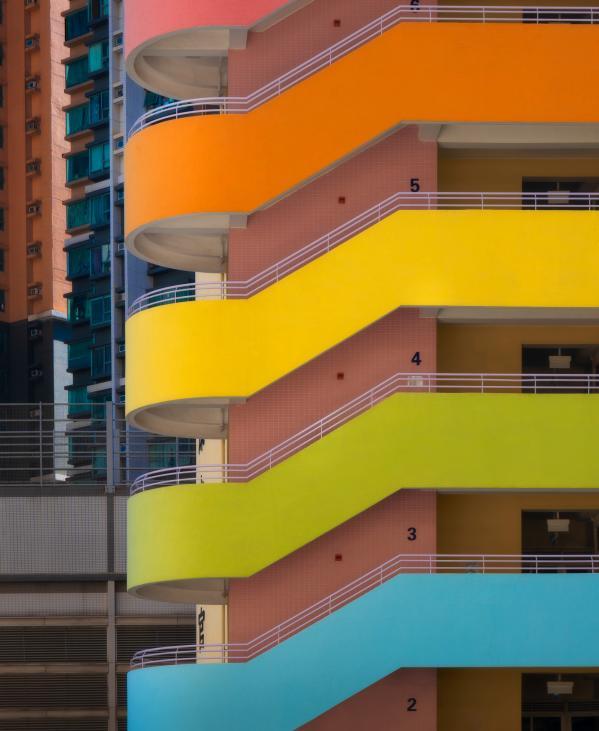
Deep water involves the stairs of primary schools. Some buildings are dull if they are shot from a wide angle, but they can be found unique if they are captured from a telephoto. The collocation of rainbow colors may be a tradition in Hong Kong, so the exterior walls of many buildings are colorful. 28-200mm The color reproduction of this lens at the telephoto end is very realistic, and there is no gray picture.
Fifth, capture the humanistic street scene
Street signs, red taxis and double-decker buses in Hong Kong are all good street shooting themes, which pay attention to waiting and prejudging, and also test the focus and lens flexibility.
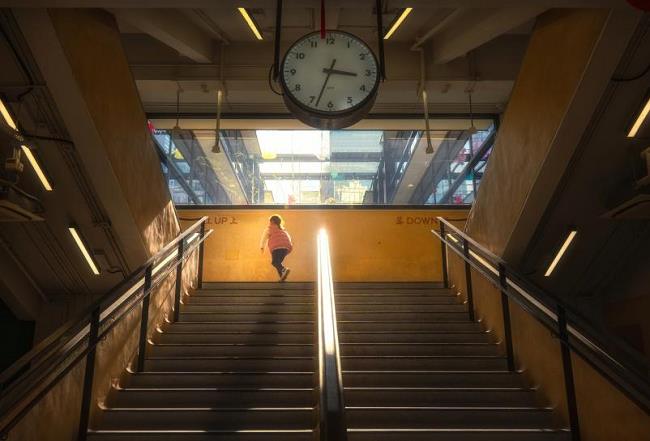
The staircase at the main entrance of Central Market is full of atmosphere because of the light coming in in the afternoon. If the right person happens to pass by, it will form a complete story. I waited here for nearly two hours, and finally I saw a father and a daughter walk in. The little girl suddenly ran away by herself, so I quickly took a snapshot and used high-speed continuous shooting +AF-C characters to chase the focus, which froze the moment. The elongated shadow on the stairs was very dramatic.
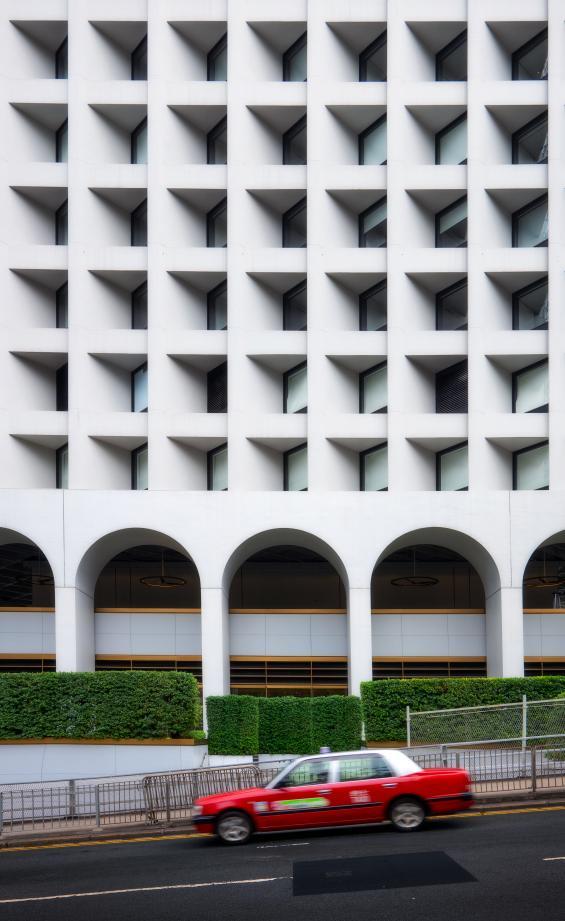
In Murray Building, Central, there is a strong contrast between the white plaid and the red taxi. Here, I deliberately slow down the shutter speed to blur the vehicle and express a dynamic state. The vehicle and the building are combined with movement. There is a lot of traffic on this main road, so if you want to take a picture of only one car passing by, you should start to observe from the next intersection. When the taxi turns around alone, you are ready to take a picture, which is also a high-speed continuous shooting +AF-C chase.
Summary:
The above is my experience and skills in this shooting. Quan Huafu’s body with 28-200mm lens can meet the needs of traveling, beginners’ entry and daily hanging-up, and make up for Panasonic users’ needs of going around the world in one mirror. The color reproduction and focusing response ability of the lens are at a good level. Combined with the high image quality and balanced video performance of S5M2 Quan Huafu’s body, it is a large zoom set with very high cost performance.
关于作者